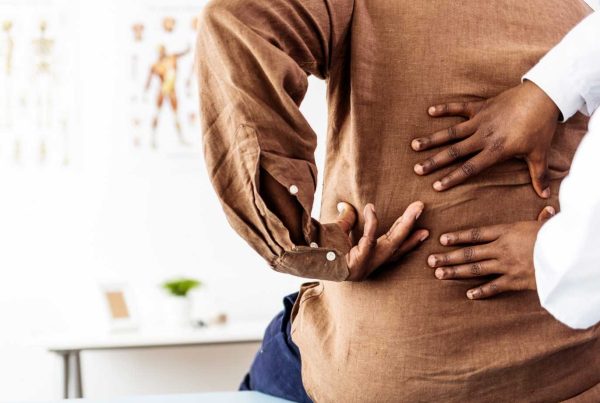After devoting her career to the Internal Revenue Service, Sharon McManamon retired at 75. She looked forward to enjoying time with her family and her partner, Bob. However, she wasn’t prepared for what came next a mere five months later.
One January morning, Sharon sat down in a chair and fell asleep after cleaning her house. When she woke up, she noticed two of her fingers felt strange, but she dismissed it and forgot about it until the next morning.
“I woke up that morning, and my whole hand was worse,” she shares. “I didn’t know what was happening but knew something was really wrong. I told Bob we needed to go to the ER.”
They told Sharon she had a mild stroke, a diagnosis that surprised her—at least at first.
“I was still walking around and able to get on and off the gurney,” she shares.
After being admitted, she began to notice other changes. Suddenly, her leg wouldn’t work, even though she had been walking just a few hours earlier.
As a result, she spent time in a local rehabilitation center, receiving both physical and occupational therapy. Toward the end of her visit, she was asked if she was interested in participating in stroke recovery research at MetroHealth—and she didn’t hesitate.
“I immediately said yes. I knew it might help me and others,” she says. “I didn’t want other people to experience what I did.”
Researchers’ Right-Hand Woman
The research study she participated in at the MetroHealth Rehabilitation Institute—world-renowned for functional electrical stimulation (FES) research—achieved significant results.
The initial research experiment concentrated on rehabilitating hand and arm function. It began with electrical stimulation of the arm twice a day, followed by occupational therapy sessions twice a week. Neuromuscular electrical stimulation aims to retrain muscles, enhance voluntary movement and alleviate pain. The subsequent phase of occupational therapy builds on that progress by focusing on strength and functional activities of the arm and hand.
Sharon also participated in another study involving Contralaterally Controlled Functional Electrical Stimulation (CCFES) and Transcranial Direct Current Stimulation. With CCFES, which stimulates hand muscles through electrodes on the skin’s surface, the stroke survivor controls the stimulation to their weak hand with a glove worn on the strong hand. This gives the person the ability to open their hand during therapy sessions. Additionally, Transcranial Direct Current Stimulation uses low-level current to stimulate nerve cells in the brain.
Sharon was amazed at the improvements in her right hand.
“Before the research studies, I couldn’t use my right hand much—and I’m right-handed. I couldn’t open jars or the car door. I really couldn’t use it much at all,” she explains. “Now, I can do all kinds of things—write with it, use a knife, lift pots and pans, get things in the oven, and hold my purse or shopping bags.”
Following the success of the first two studies, Sharon opted to participate in the third after Krissy Hansen, PT, ATP, noticed her walking with a limp.
“I didn’t have the same control with my leg as before the stroke,” she says, “so Krissy suggested I participate in a research study to determine how motions and reflexes affect my walking post-stroke.”
Often, after a stroke, patients do not regain a regular, safe gait pattern, even after physical therapy. And many, like Sharon, continue to experience gait deficits.
In this study in MetroHealth’s gait lab, researchers analyze and measure a person’s walking patterns to understand how individuals move and identify movement problems. They then utilize FES in hopes of improving gait.
Sharon was placed in a harness, and researchers attached electrodes to her leg and hip to measure these patterns. FES was then used to help facilitate neural mechanisms to aid motor recovery. Electrically induced contractions, combined with voluntary contractions, strengthen spinal synapses and encourage changes in the cortex.
From Research to Results
Today, Sharon’s gait has improved significantly.
She is grateful for the opportunity to participate in the studies and would do so again without hesitation.
“I can’t say enough about my experience at MetroHealth and the researchers and therapists there,” she says. “In the days after the stroke, I couldn’t get out of bed without help, and I had to use a walker. Now, I can use my arm and walk better. If I needed anything more, I would definitely go back to MetroHealth. Their work is so impressive and improved my quality of life.”
Leaders in rehabilitation, research, and education to improve care for the most complex injuries and illnesses. Visit our website for more information about the MetroHealth Rehabilitation Institute or call:
- Outpatient appointments for adults and children, call 216-778-4414
- Inpatient services or admission for adults and children 13 yrs+, call 216-778-4167
Do you want to help patients like Sharon? The MetroHealth Foundation is making a difference every day. Learn more or give at metrohealth.org/foundation.











